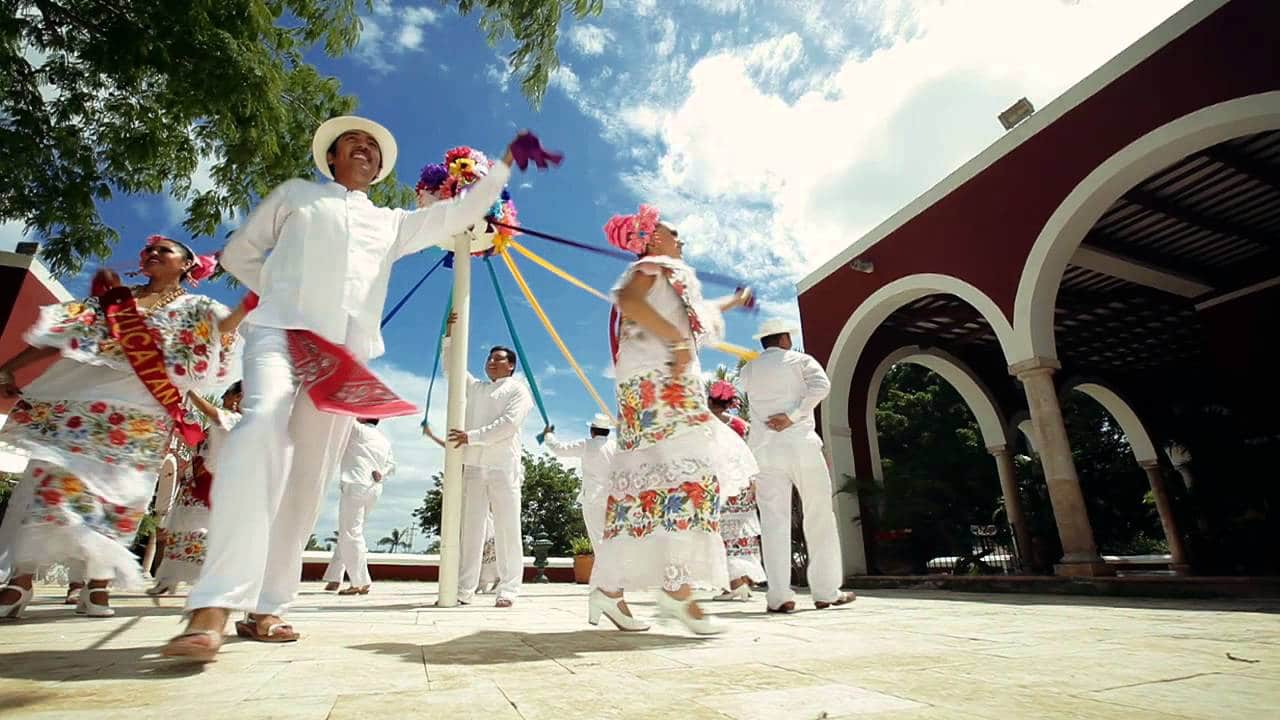
Perhaps the best known folkloric expression of the Mexican state of Yucatan is the Dance of the Ribbons, although it is also present in other regions of the country, always linked to festivities and celebrations.
Like so many other cultural manifestations of America, also in this dance we find an interesting fusion of indigenous and European elements. Here we tell you the origins and characteristics of this beautiful, joyful and colorful collective dance.
Origin of the Ribbon Dance
As curious as it may seem, the truth is that the origin of the Baile de las Cintas so famous today in Yucatan and other places of Mexico, is located on the other side of the Atlantic Ocean.
The dance was born in the German region of Bavaria, in the heart of old Europe, where it is still celebrated with enthusiasm today. It is the tradition of Maibaum ("Maypole" in German).
Is an old Germanic pagan tradition that has survived to this day. To celebrate the arrival of spring, a very tall pole or trunk is erected, adorned with pennants and assorted ornaments. In the highest part of it, white and blue ribbons are tied (those of the Bavarian flag), so long that they reach the ground. The dancers take each of these ribbons by the hand and perform a complicated dance around them.

The origin of the Dance of the Ribbons of Yucatan could be in the tradition of the Maibaum in Bavaria, Germany
From Bavaria to Mexico
But How did the German Baile de las Cintas arrive in Mexico? Historians believe that this dance, which spread from Bavaria throughout medieval times to other European regions such as Flanders, came to America from the hand of the Spanish during the first decades of the conquest. After being crowned king, Carlos V would have brought to Spain his entourage made up of numerous followers and relatives from his native Ghent. This is how the call would have reached the Iberian Peninsula Dance of the Cord, which would later be exported to the viceroyalty of New Spain (present-day Mexico).
However, according to another theory, the Ribbon Dance became popular during the brief reign of Maximilian I, Emperor of Mexico, between 1864 and 1867. It should not be overlooked that his wife Sofia it was also Bavarian princess. With her traveled many Bavarian families that settled in Mexican territory. It is quite likely that they were the first to perform this dance in the new world. Only three years, but enough for this dance to take root in the country.
From then until today, in all dairy farms (typical Yucatecan festivals originally linked to cattle fairs), the Baile de las Cintas is danced.
The Yucatan style
Of course there are some differences between the Bavarian tradition and that of Yucatan. The dance and all the elements that surround it have been adapted to local customs and traditions, with a more attractive result than the original German dance.
For example: the post, which in Germany is usually the trunk of a fir tree, is in Mexico of ceiba wood. Its height is approximately five meters and the ribbons that hang from its highest part are of various colors, not just blue and white, as the Bavarian custom dictates. The dance is also somewhat different, as it incorporates some turns and movements more typical of Latin dances.
The Dance of the Ribbons is a tradition closely linked to the identity of Yucatan. So much so that the institutional logo of the government of this state is inspired by it.
How is the Dance of the Ribbons performed?
As is logical, for the dance to be executed properly there must be as many dancers as there are bands, generally 10 or 12. Half of them are men and the other half women. They all hold the end of the ribbon with one of their hands as they twirl around the pole at a joyous three-quarter rhythm. revelry (This is how the musical style that accompanies this dance is known).
The objective of the dance is for the ribbons to become tangled and braided until they form a beautiful colored pattern. The second movement of this dance consists precisely in undoing this drawing and returning to the starting point.
Interestingly, one or two of the Ribbon Dance participants must sacrifice for their companions and give up dancing. Your mission is to hold the post firmly and ensure that it remains vertical. His is a little recognized work, but fundamental for the optimal development of the party.
The dancers' movements must be precise and coordinated, otherwise the ribbons would become tangled and the choreography would become chaotic. In the video Above you can see the degree of difficulty of this dance and the spectacular visual result it offers to the spectators.